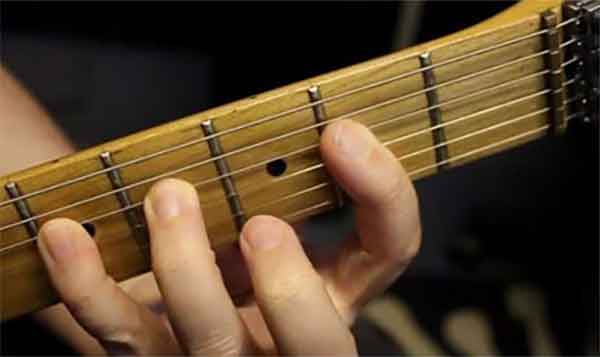Although you may have heard the term “scales” on your guitar journey, several players may not understand what they mean. On practicing guitar, knowing scales can be overwhelming.
But why should you practice scales?
Scales on the guitar are arranged series of notes played in ascending or descending to encourage you to develop finger power and flexibility. Perhaps improving your sense of rhythm and obtaining a framework for making melodies for your new songs, learning about guitar scales is essential.
To get you started, here are eight important ways you’ll quickly learn guitar scales and be able to apply techniques to your music creation.
Technical Techniques
These four techniques aim to improve your visual image of the guitar scales while also strengthening your hand movement and precision.
1. Understand the ascending and descending series
It’s not as easy as doing an up and down series to play the scale. To exercise easily, you need to start on the lowest note of the major or minor scale, work your way up to the highest note possible, then descend to the lowest note before ascending back to the root note.
It helps you understand and practice the routine and familiarize your fingers with each note’s positions. Begin slowly and gradually increase the pace as your confidence in the exercise grows.
2. Major scale, minor pentatonic scale, and minor scale sequences
This exercise shakes it up and puts your visual scale portrait to the test and is the same with technique number one that teaches your ear to recognize the right notes of the scale you’re mastering. To figure out what notes, start with the open string and work your way up the fret.
However, if you’re not certain if it’s a scale component, refer to the previously learned scale pattern, mastering the major scale and minor scale. However, it requires time to know the vertical scales like e minor, c major scale, g major scale, and minor pentatonic scale.

3. Scale practice on random positions
Once you’ve got the sound of the guitar scale, you can begin looking for it on the fretboard in other positions. This second technique is similar to the above, except that you alternate directions instead of descending to the highest or lowest notes.
This technique is not only useful for playing, but it also helps with ear training because you can decide if a note should be included in your guitar scale based on its sound. You may spend a lot of time, so be patient and persevere.
4. Map out interval pattern
For the new guitar scale, write down the interval pattern throughout the whole and half paths. Then, choose an interval to work with to start this technique. For example, the c major chords are C, D, E, F, G, A, and B.
Moreover, know about intervals and how they combine to form scales if this is your first time. You can start with the lowest note of the scale, go to the third interval of that note if you’re using the interval of thirds, then go on to the second scale and third interval of that note, and so on.
Musical Techniques
These four remaining techniques are designed to bring what you’ve learned so far into a musical piece. These musical techniques included mastering another musical context that helped solve the problem of playing guitar.
5. Practicing scales through listening solos
Find songs that use the scales you’re learning by doing some research. Make a playlist of them and listen to how the guitarist takes the scale in a solo.
It’s also a good thing to exercise and jot down some of the exciting riffs you hear in that recording so you can use them yourself. This may be the most essential of all the exercises.
6. Nursery rhyme application
Although the exercise is easy, it will take a little time at first. To be able to play some children’s songs, instantly use your major and minor scale. Most Nursery rhymes have fairly simple melodies, which is why it’s best to play scales through them.
7. Play your favorite song
String your guitar with your favorite songs can be a way to master the scale you’re studying. Basically, sing a short piece and then compose the same phrase on your guitar in the same order.
You’ll eventually be able to sing and play songs simultaneously, with no gap between what comes out of your mouth and what you play on your instrument.
8. Record and Improvise
This is yet another excellent ear training technique. As such, make a recording of yourself doing the new scale. As an example, experiment with different rhythms.
Spend more time learning about the scale’s capabilities. Switch on a backing track in the same key and scale when you’re ready, and improve your skills at that.
Why is this worth learning?
The goal of the above techniques is to help you recognize and improve different scales and notes so that you still know what you’re playing when you’re playing.
Above all, patience is a virtue of playing the guitar. So, extend your patience to expand your comfort zone then you’ll see how fast you develop as a guitarist.
